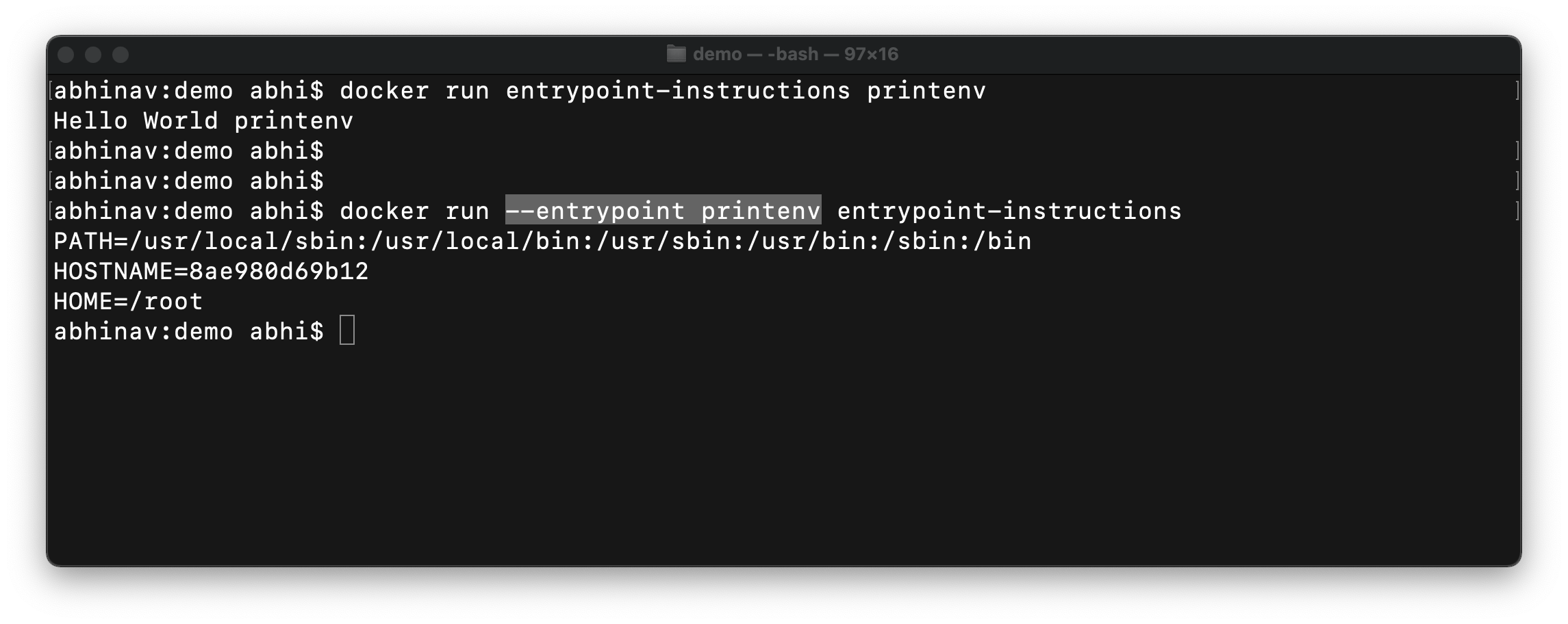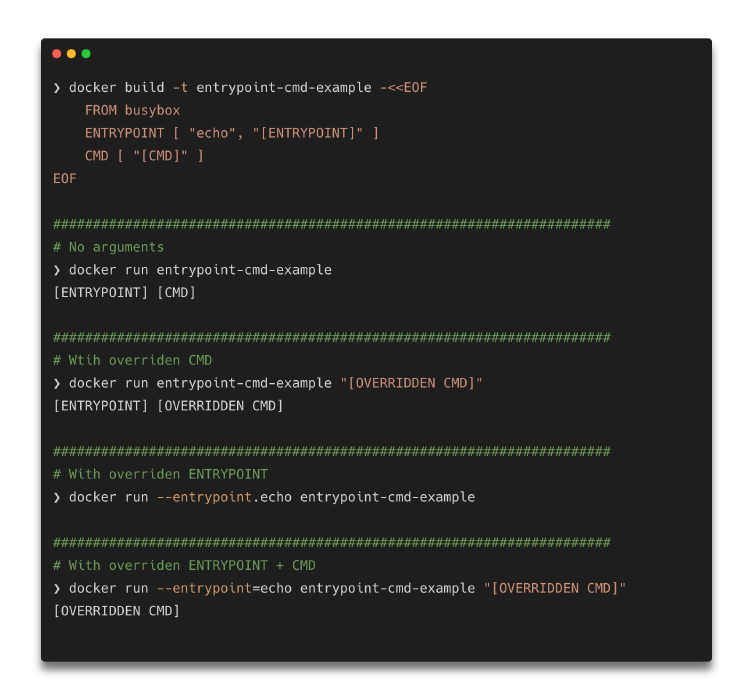WEB In that case you need to use the --entrypoint flag and run the container using the following syntax. When Docker launches a container it combines the entrypoint and command parts together into a single command. WEB After some testing and reading the docs its obvious that there is no way to mimic the dockerfile or docker-compose entrypoint behavior. WEB The main difference between CMD and Entrypoint is that you can override the CMD instruction from Docker CLI when the container is. WEB Here we replaced the string with HellotWorldtof Docker Run Weve effectively overridden the CMD value HellotWorld of the Dockerfile..
While running a new Docker container we can assign the port mapping in the docker run command using the -p option. When an you execute docker run the container process that runs is isolated in that it has its own file system its own networking and its own isolated. Replace this -p 80808080 by this -p 80808080 The Docker host you can use this port to access. Docker run -t -i -v varrundockersockvarrundockersock -v pathtostatic-docker-binaryusrbindocker busybox sh By. Not sure if you can apply port mapping a running container You can apply port forwarding while running a container which is different than..
WEB In that case you need to use the --entrypoint flag and run the container using the following syntax. When Docker launches a container it combines the entrypoint and command parts together into a single command. WEB After some testing and reading the docs its obvious that there is no way to mimic the dockerfile or docker-compose entrypoint behavior. WEB The main difference between CMD and Entrypoint is that you can override the CMD instruction from Docker CLI when the container is. WEB Here we replaced the string with HellotWorldtof Docker Run Weve effectively overridden the CMD value HellotWorld of the Dockerfile..
Result To find the mapping between the host ports and the exposed ports use the docker port command. Result When running the command the Docker CLI client checks the value the variable has in your local environment and passes it to. Result You can pass environment variables to your containers with the -e flag. Result When we launch our Docker container we can pass environment variables as key-value pairs directly into the. Create a directory for the new Docker image and cd into the path Mkdir directory-path cd directory-path 2..


Tidak ada komentar :
Posting Komentar